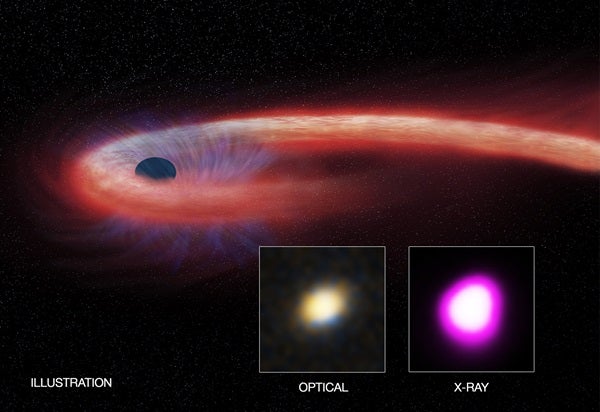A supermassive black hole has been tearing apart and eating a star for so long it set a new record.
According to researchers, this tidal disruption event was 10 times longer than any other star’s death, which either means the black hole was destroying an incredibly large star or it thoroughly torn apart a smaller star.
The team of researchers began observing the TDE that destroyed the too close star in July 2005, using NASA’s Chandra X-ray Observatory and Swift satellite and ESA’s WMM-Newton.
“We have witnessed a star’s spectacular and prolonged demise,” Dacheng Lin from the University of New Hampshire in Durham, New Hampshire, who led the study, said in a press release. “Dozens of tidal disruption events have been detected since the 1990s, but none that remained bright for nearly as long as this one.”
This black hole, known as XJ1500+0154, is at the center of a host galaxy about 1.8 billion light-years from Earth. It reached peak brightness in June 2008, and has been on researchers’ radars ever since.
“For most of the time we’ve been looking at this object, it has been growing rapidly,” James Guillochon of the Harvard-Smithsonian Center for Astrophysics in Cambridge, Mass. and co-author of the study said. “This tells us something unusual — like a star twice as heavy as our Sun — is being fed into the black hole.”
Finding this drawn out death of a star by black hole shows not only that supermassive black holes can grow, but it also gives researchers more information about advanced black holes and how they came to be.
According to the researchers, the star that the black hole is feeding on will diminish in the next several years, and will therefore cause the brightness of XJ1500+0154 to fade as well.










